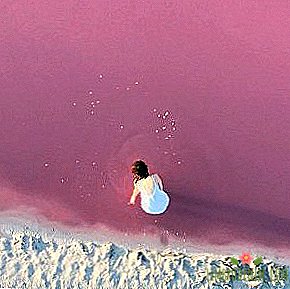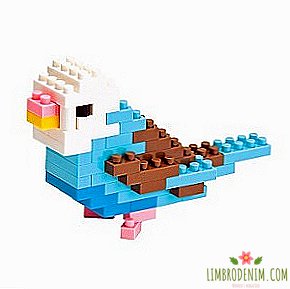Allergy to cleanliness: How to competently deal with dust, so as not to hurt
Dust is very fine (value of not more than one tenth of a millimeter) particles of skin, hair, pet hair, pellets of clothing, as well as plant pollen, grains of sand or fungal spores. Dust can be harmless, and can seriously spoil health. How to prevent the latter, we understand together with doctors: candidate of medical sciences, allergist-immunologist of Medicine clinic Sergei Bykov, expert of the Molecular Diagnostics Center (CMD) of the Central Research Institute of Epidemiology of Rospotrebnadzor Marina Vershinina and candidate of medical sciences, otorhinolaryngologist, founder of "ENT clinic of doctor Zaytsev "Vladimir Zaitsev.

We breathe dust and that's fine.
Oddly enough, most of the dust gets into the room not with outdoor shoes and outerwear, but with air. It is present in the smallest amount even in the cleanest mountain region, so the phrase “we breathe dust” is true, no matter how often the cleaning is done. Moreover, the creation of a home environment close to the hospital can not play in your favor (do not confuse sterility with cleanliness: the latter in the house, of course, is needed).
According to Marina Vershinina, excessive hygiene is the reason for the growth of allergic diseases in the modern world, including in children. When the body is almost not in contact with microorganisms that “train” the immune system (bacteria or fungi), the “bored” immune system finds other enemies for itself. They are allergens that are safe for most people. So trying to protect a child from contact with household dust and endlessly washing floors for prevention is a bad idea. This can only be true when allergies or asthma have already developed. Inhaling up to fifty milligrams of dust per day is normal for an adult with no problems with the respiratory system.
Humidifiers and mold
Most of the dust contains not outside air, which is constantly updated due to circulation, but the air of enclosed spaces - offices or apartments. When there is too much dust in it, allergies can occur, especially if there is a predisposition to it. It also happens that due to the increased humidity in the house dust there are a lot of mold particles. The latter easily penetrates into the respiratory tract and with long contact provokes the development of bronchial asthma.
The reproduction of fungi can lead, for example, to the operation of air washing, a device that removes dust and moisturizes the air. Vladimir Zaitsev notes that if you do not forget to change the water in the device in time and periodically clean it according to the instructions, this problem will not arise. True, people with asthma should abandon sinks and humidifiers - they need to breathe relatively clean and always dry (40-50% humidity) air. This will help air purifiers and working batteries, air conditioning or climate control system. Doctor Sergey Bykov advises people with this diagnosis also not to forget to turn on the hood while cooking and not to leave the bathroom door open so that there is less steam in the air.

Dust mites
The cause of sneezing, runny nose or nasal congestion, coughing, breathing problems can be dust mites - close relatives of lice. These microscopic insects do not drink blood and do not spread infections, but they feed on dead skin cells, get liquid from humid air and reproduce well in a warm environment, for example, in bed - pillows, blankets, and mattresses. A sure way to defeat the pests is to create uncomfortable conditions for their existence. Make a choice in favor of synthetic materials: discard feather pillows, down blankets, woolen blankets. Put anti-mite covers on pillows - they will provide good ventilation due to rapid removal of heat and moisture. Do not make the bed as soon as you get up - let the laundry dry and cool. It is recommended to wash bed linen at high temperature (at least sixty degrees), at least once a week.
Ticks can dwell in carpets, fabric curtains and upholstery furniture where there is usually a lot of dust. If it is difficult to abandon the carpet, be prepared to regularly vacuum and wash it with a special tool about a couple of times a month. Curtains made of natural fabrics should be replaced with synthetic ones - they are easier to clean, and upholstered furniture should be sprayed to absorb less dust. Another option is to give preference to wooden or plastic chairs, armchairs and sofas with leather upholstery, or to regularly remove and wash cloth. According to Marina Vershinina, sometimes flame retardants are found in the dust - strong allergens. These toxic elements are added to building materials, flooring, furniture upholstery to protect against fire. As a result, the only way to relieve the symptoms of allergy is taking an antihistamine.
What to do
Make sure there are as few dust collectors as possible - old carpets, pillows, soft toys - even if there are children at home, you can put the toys in the drawers when they are not in use. Do not store things under the bed or have special boxes for them. Outerwear that is temporarily not used should be removed in vacuum bags, and shoes - in plastic sections or boxes. A lot of dust collect paper and books - keep them in closed cabinets and drawers or make a choice in favor of electronic analogs.
In order not to accumulate paper, create an electronic office: you can save any receipts in the "cloud", and print out instructions on the instruments if you wish to find them on the Internet. For documents, even a scanner is not needed - just take a picture of them on a smartphone or use an application for scanning. In addition, finding the desired form in the phone is much easier than moving the stacks of paper sheets from place to place.
Do not do without wet cleaning once or twice a week. We have already talked about how to do it properly, as well as to clean and moisten the air in the room. Additionally, experts advise at least a couple of times a year to wash the chandeliers, windows and clean the ventilation grilles. There are a lot of devices and gadgets that help to effectively deal with dust. The main thing that is important to consider when choosing a vacuum cleaner or air cleaner is the presence of a HEPA filter. The latter is made of fiberglass and is able to hold the maximum amount of the smallest particles from the air.
A steam vacuum cleaner is also useful at home: steam helps to remove dirt and dust from hard-to-reach places, for example, to clean tile grout. The appliance has a more compact and cheaper alternative - a manual steam cleaner with interchangeable nozzles for washing different surfaces - the hob, curtains, furniture, glass, and so on.
Photo:dimedrol68 - stock.adobe.com, Nitr - stock.adobe.com, Technopark





